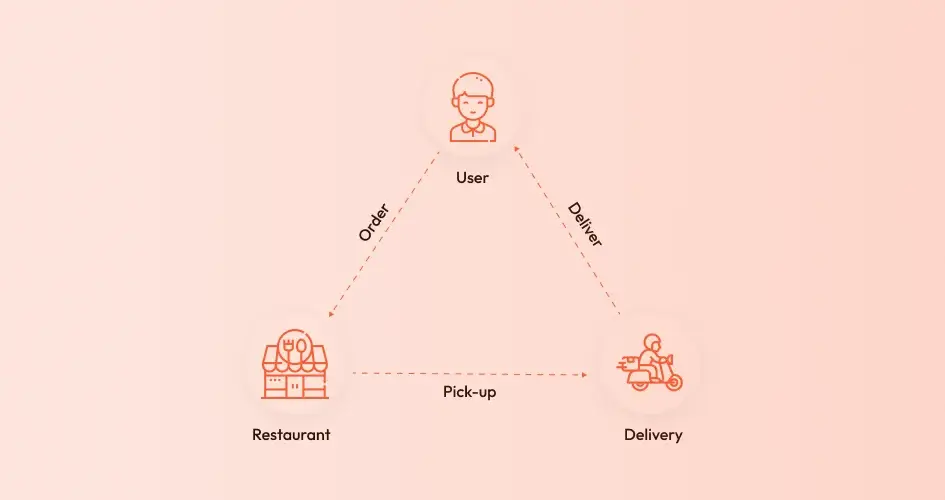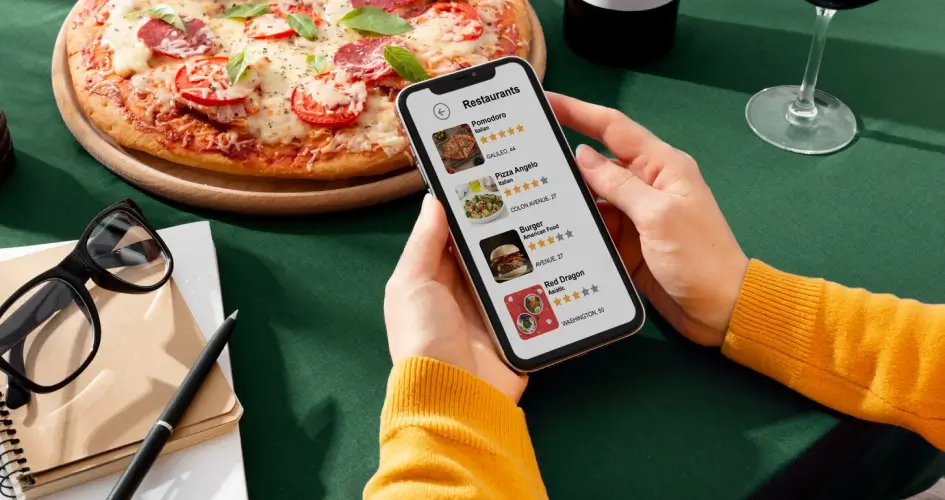The food industry is leveraging mobility driven by the growth of mobile app development.
But, are you prepared to take benefit of this change?
If so, you can hire a food delivery app development company and discuss all the features to include in your app.
Since the likes of Uber Eats, Just Eat, and Grubhub are already reputed names in the industry, you can think of taking small steps in the same direction.
But, how do you begin? What is the right approach?
Also, what are the things that your app would need?
What are the features it should have?
Let us check it out!
How Has Uber Eats Changed the Food Delivery Industry?
Uber Eats is an online food ordering and delivery service provider.
While the industry is still in its infancy, Uber Eats has gone beyond taking baby steps to ensure that customers have nothing but the best experience.
Statistically speaking, Uber Eats has partnered with more than 500,000 restaurants as of June 2020.
Not to mention, the company is experiencing approximately 2-times Year-on-Year increase in its numbers as per the same report.
It is easy to predict that the service is a key factor behind these numbers.
Going beyond that single element, there is a lot that has worked in favor of Uber Eats.
💡 Uber Eats comes loaded with feature sets to ensure quick customer conversion and seamless retention.
In this article, we will review the features that stand out in Uber Eats and how your food delivery app, too, can leverage such Uber Eats features and stand out amongst the rest in the market.
Uber Eats Features To Include In Your Food Delivery App
Uber Eats stands tall on the kind of features that it provides to its customers.
Features are meant to provide convenience to customers while delivering the food.
Also, it helps delivery partners to drive efficiency with an array of user-friendly features that ensure on-time delivery.
1. Deals And Promotions
Customers can connect if your food delivery application can provide relevance. If your food delivery app is not centred around it, it will fail.
This is where Uber Eats stand out.
It showcases deals and promotions to its users only if they are relevant.
For example, a customer who frequently consumes Pizza would not be inclined to order Asian cuisine.
Uber Eats would only provide discount offers for cuisines that a particular customer orders.
User retention is much higher when food delivery apps understand what their users are looking for.
Therefore, if your app has relevant deals and promotions for the customers, it becomes easier to convert new users while also ensuring a long-term relationship with customized promotions.
2. Schedule Orders
Uber Eats has set a benchmark by allowing its customers to schedule their orders.
Many users would leverage it for the same-time delivery and by scheduling their orders even a week before.
Such a feature will allow your users to plan ahead of their days.
Customers love this feature as it allows them to browse restaurant menus and schedule their meal at the same moment instead of ordering at the last moment.
The principle states that even though customers schedule their orders, restaurants prepare fresh food to be delivered fresh right at the customers’ doorstep.
3. Delivery Tracking
Repeated calls by delivery agents to know the directions irritate customers.
Similarly, delivery agents also feel the heat when customers ask them very often about how far they are and how much more time they would need to reach.
Integration of Google Maps or other similar map-based interfaces serves benefits for both sides.
Delivery agents can directly reach the location fetched by the customer and the customer can know where his or her food has reached.
Enabling delivery tracking features in your application can help customers know about the estimated time and the real-time location of both parties, making it smoother and much more useful.
4. Restaurant Manager
A food delivery app stores the data anyway, so one might transfer the benefits to the partners.
A section dedicated to the restaurants where they can view orders, bills, and the editable menu gives restaurants the belief that they have a true sense of belonging in the tech world.
When partner restaurants find it easy to use and understand the app, they will ensure efficient kitchen management to deliver more orders.
When restaurant owners have quick access to order dashboard features that help gauge orders during peak hours which can optimize their cooking functions.
The order management dashboard with graphics and charts helps restaurant managers quickly analyze the number of orders, the kind of orders, and how frequently a particular customer places an order for better customization.
Share the information of the delivery agent who will be delivering the specific order in the same dedicated section so the restaurant manager can stay connected to ensure order delivery.
5. Payment Options
Identify the new payment options that are approved and regulated by relevant authorities to be added to the list of payment options.
For instance, net banking and credit cards have already existed with a rise in debit cards and services like PayPal.
Integrate these services to offer more options to customers to hand them the freedom to place orders through their preferred payment method.
Financial institutions link banks and card issuers with restaurants to run offers that provide discounts and cashback.
This way, users can settle the invoice in any manner he or she feels comfortable with.
6. User Interface
It all comes down to the basics that make it easier for the user and the restaurant to operate the application.
The design and tools available on the tip of the fingers make it convenient for the users to access and navigate their ways in the app.
Customers barely return after having a bad experience, giving an edge to the competitors who are quick enough to shower discounts on them.
The UI should be pared down to its bare essentials, with crisp lines and a large white space. App users will feel more at ease with the app due to this.
Fonts and icons matter along with the transition effect. Adopt the minimalist approach to create the best experience.
It gives customers a concise presentation where they do not have to look around for important points.
Other Features To Include In Your Food Delivery App
We have further curated a list of four more features that must be considered by an upcoming food delivery app.
7. Search Filters
Search filters make it convenient for users to find their favorite meal by selecting what type of cuisine they are looking for.
Delivery time matters and all the restaurants take time to prepare the food.
Highlight that in the search filter for the users who immediately want to consume their meal.
8. Social Media Integration
Enable customers to share photos or videos or reviews of their latest bite on a social media platform.
It will create more discussions about your brand among a circle with many even registering themselves on the application.
Reviews on social platforms are rather helpful because they encourage more people to join the conversation.
You can track what is buzzing in the market and promote partners accordingly.
If an Italian restaurant is the talk of the town then post the same on your social media accounts.
9. Profile Customization
Users love a feature that allows them to customize their profiles. UberEats does this brilliantly by allowing its users to have their own cover photos and profile pictures.
A food order app can go a step ahead by allowing users to customize small details like delivery address and preferred payment option.
10. Push Notification
It is kind of mandatory for every application to have push notification enabled unless the user has disabled it.
Push notifications in a food delivery app help connect better with users by dropping an amazing offer on their device and drive orders, more frequently.
Also, it is better to not send too many push notifications to an extent that users end up removing the app.
Conclusion
It is important to build a food delivery app in a way that connects with the customers in the right manner.
For this, here are some of the key aspects to consider.
Many players have clustered the food delivery market. But, there is always a scope for improvement when you begin to create a food delivery app.
Integrating key features and blending in the top-notch UX/UX can help create a difference and make your app stand out.
If you are looking to enter the food delivery space by going online, we recommend discussing ideas with our dedicated expert.
After signing an NDA, our company follows the standard process to speak more about your business idea.
This will ensure that your business ideas are kept secret and our expert team will share suggestions to help you get started in the right direction.




